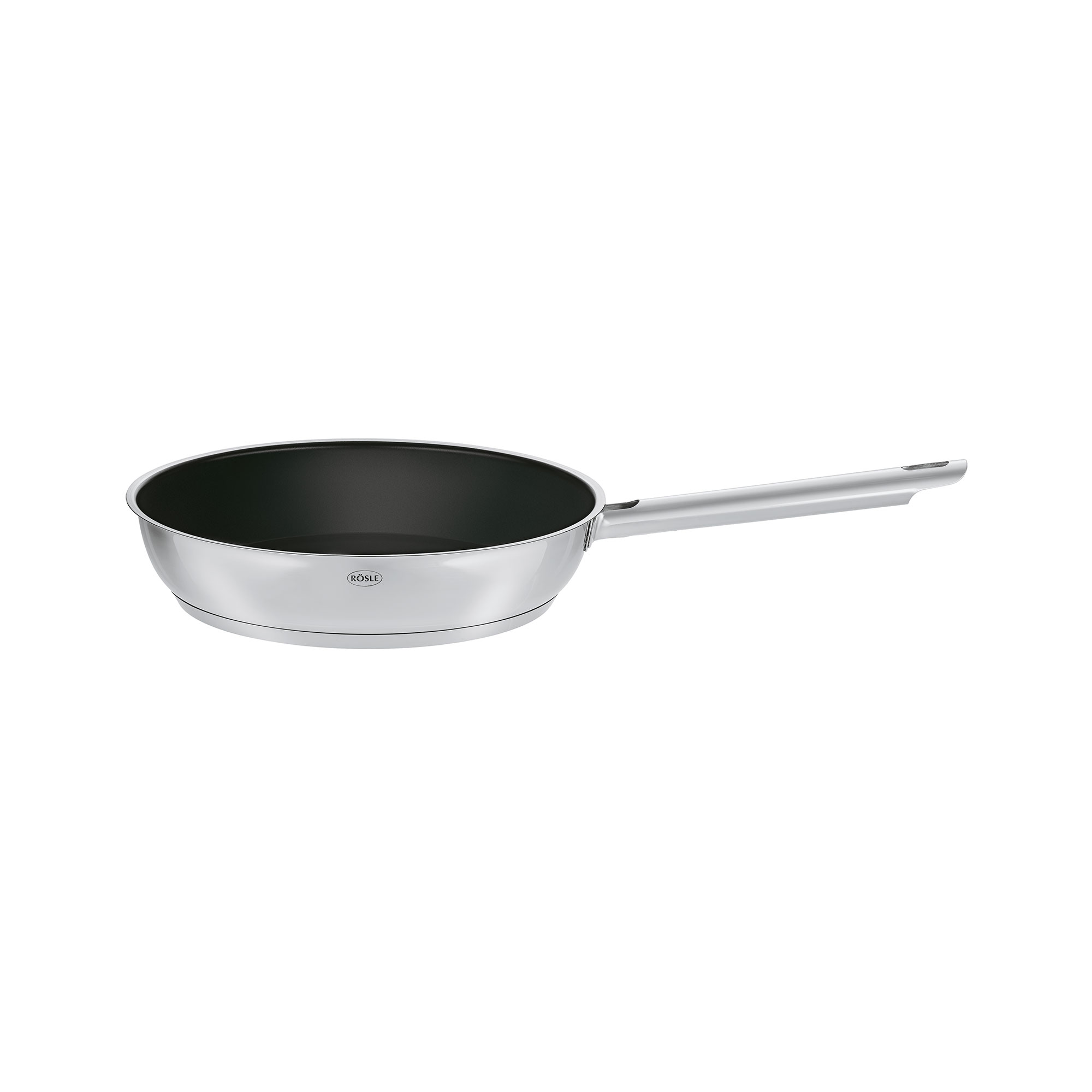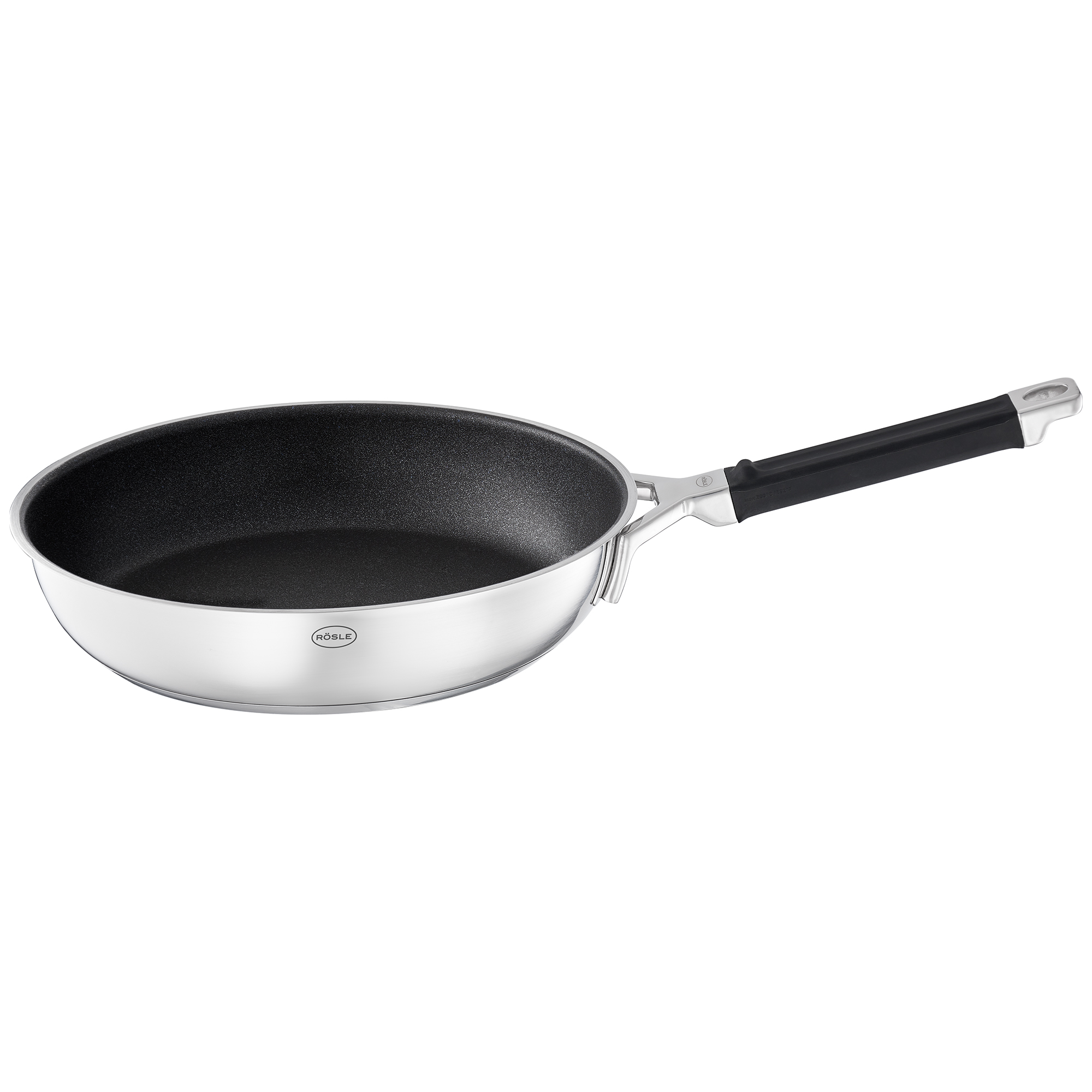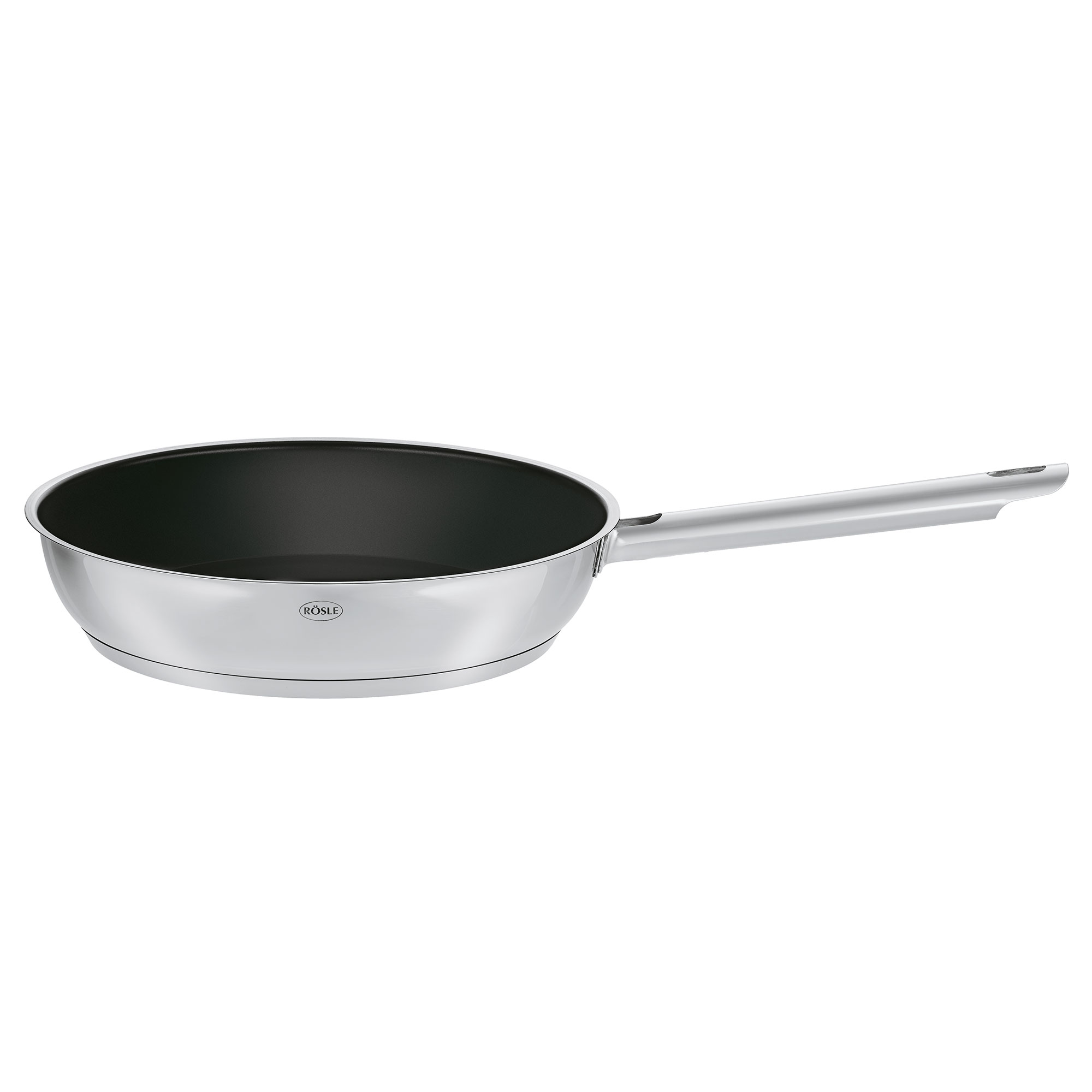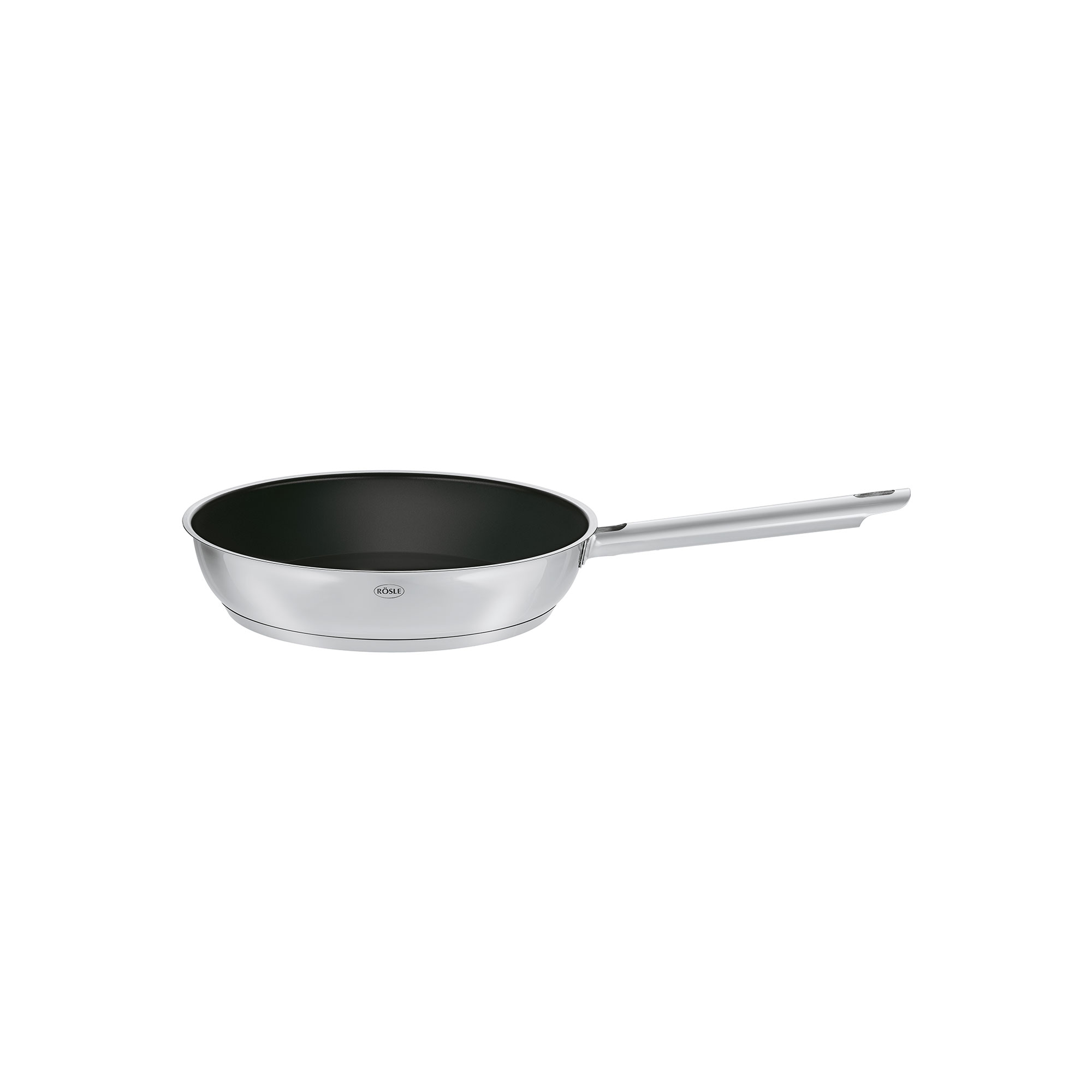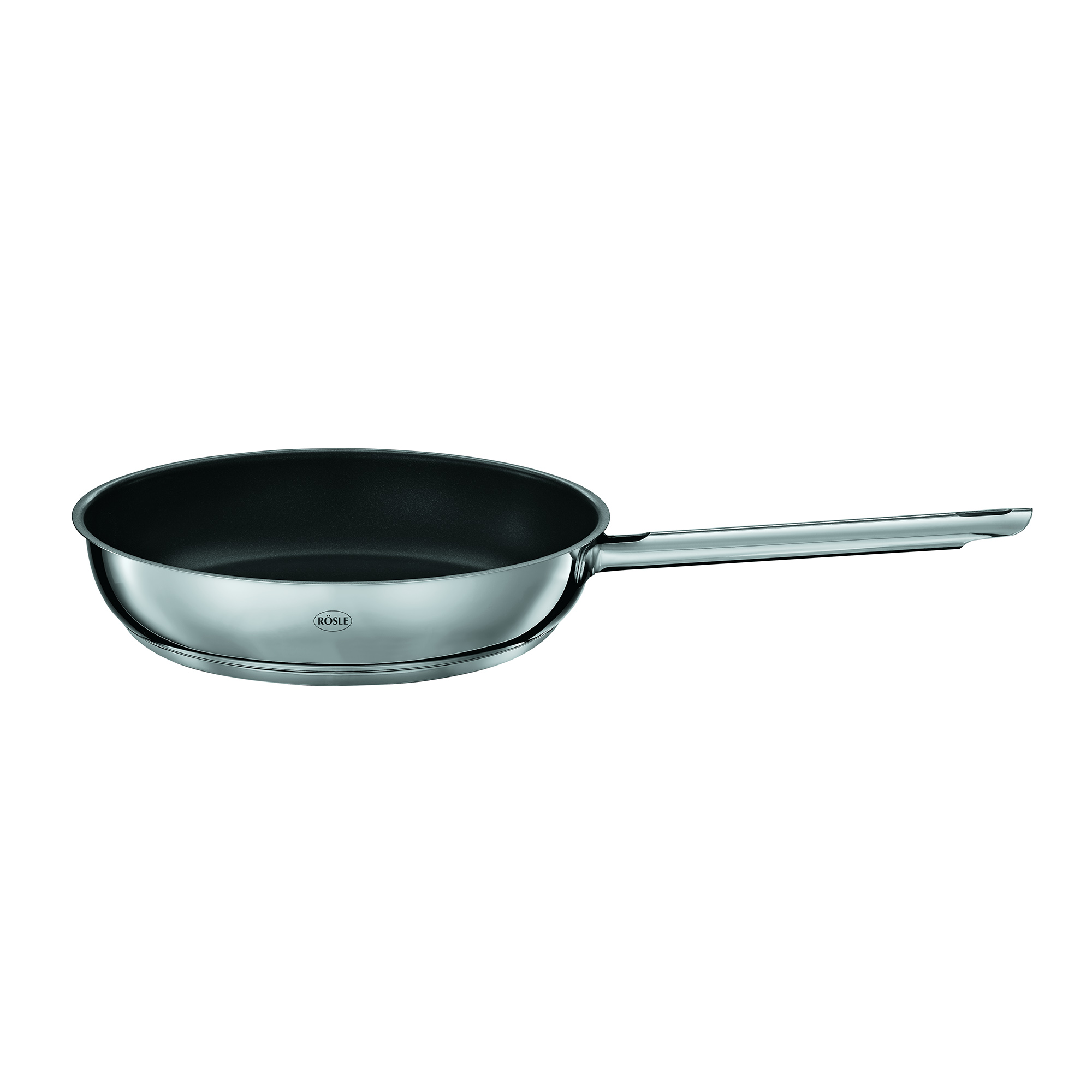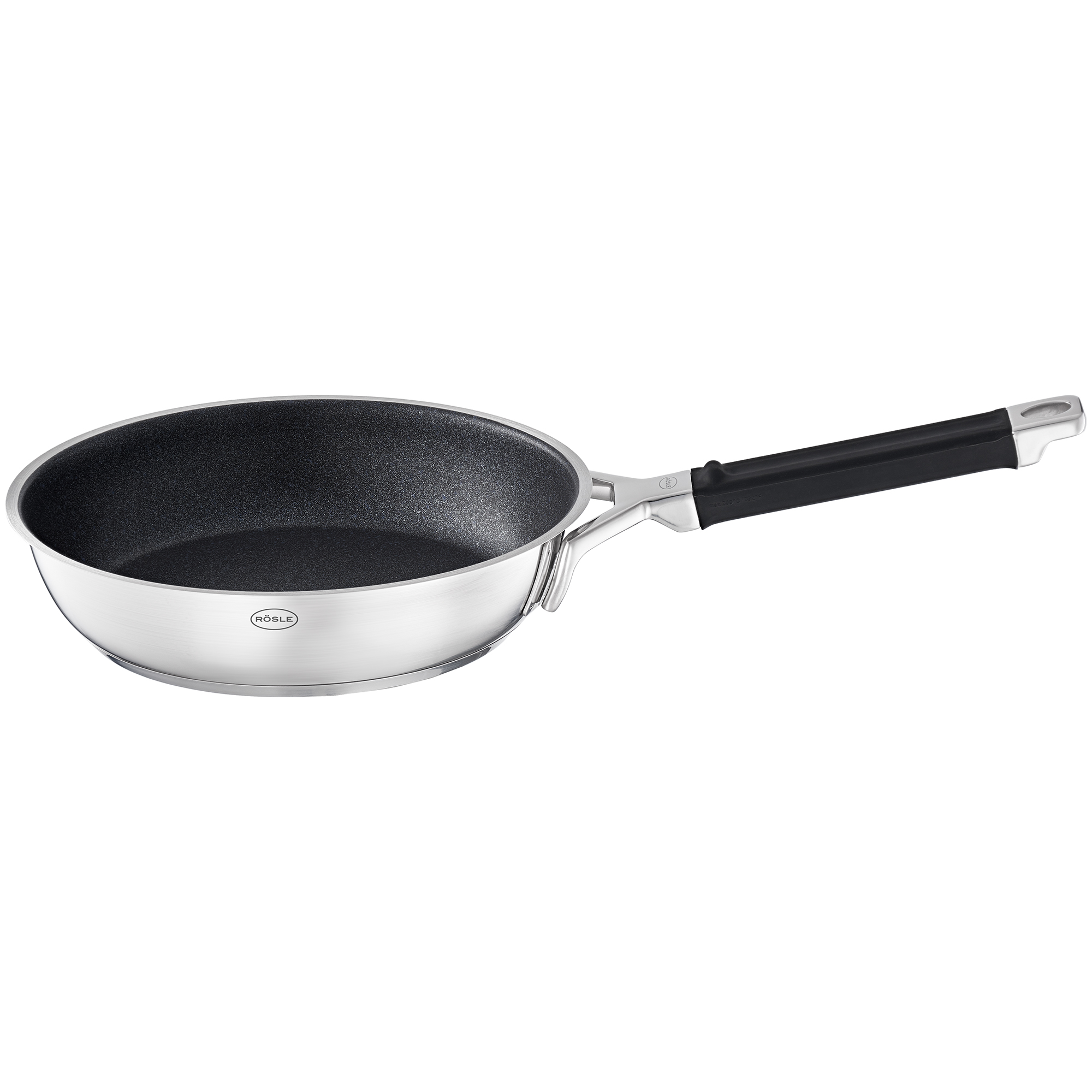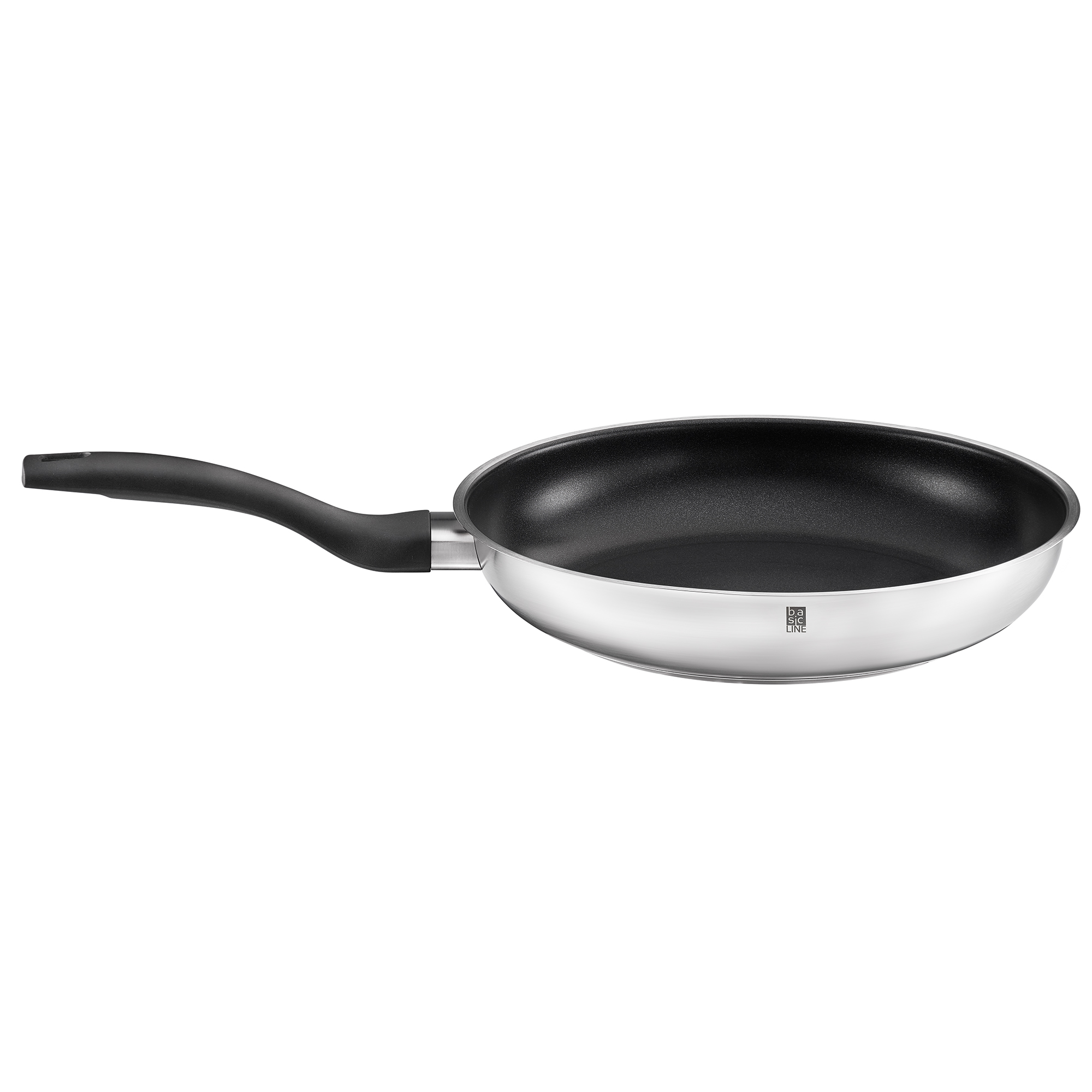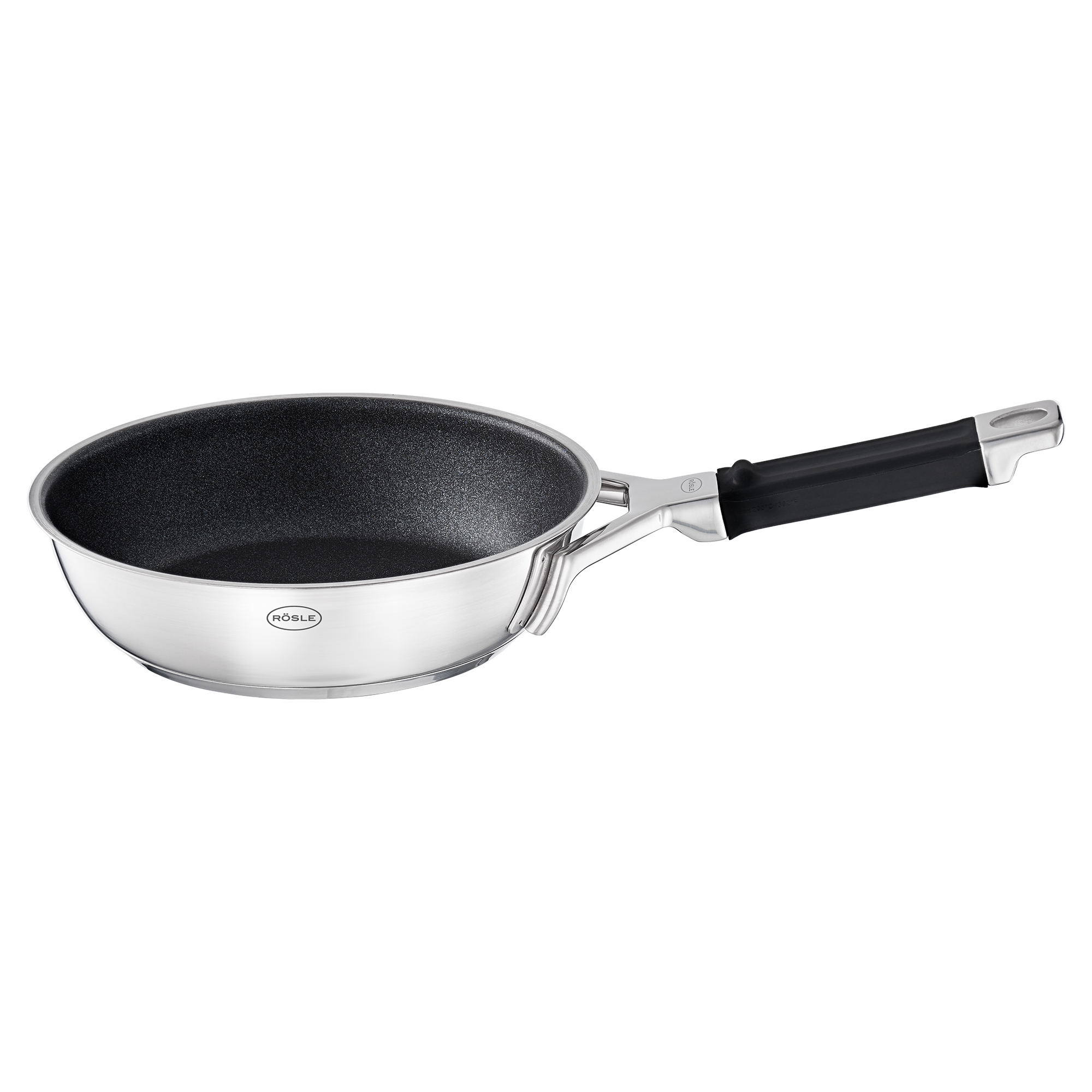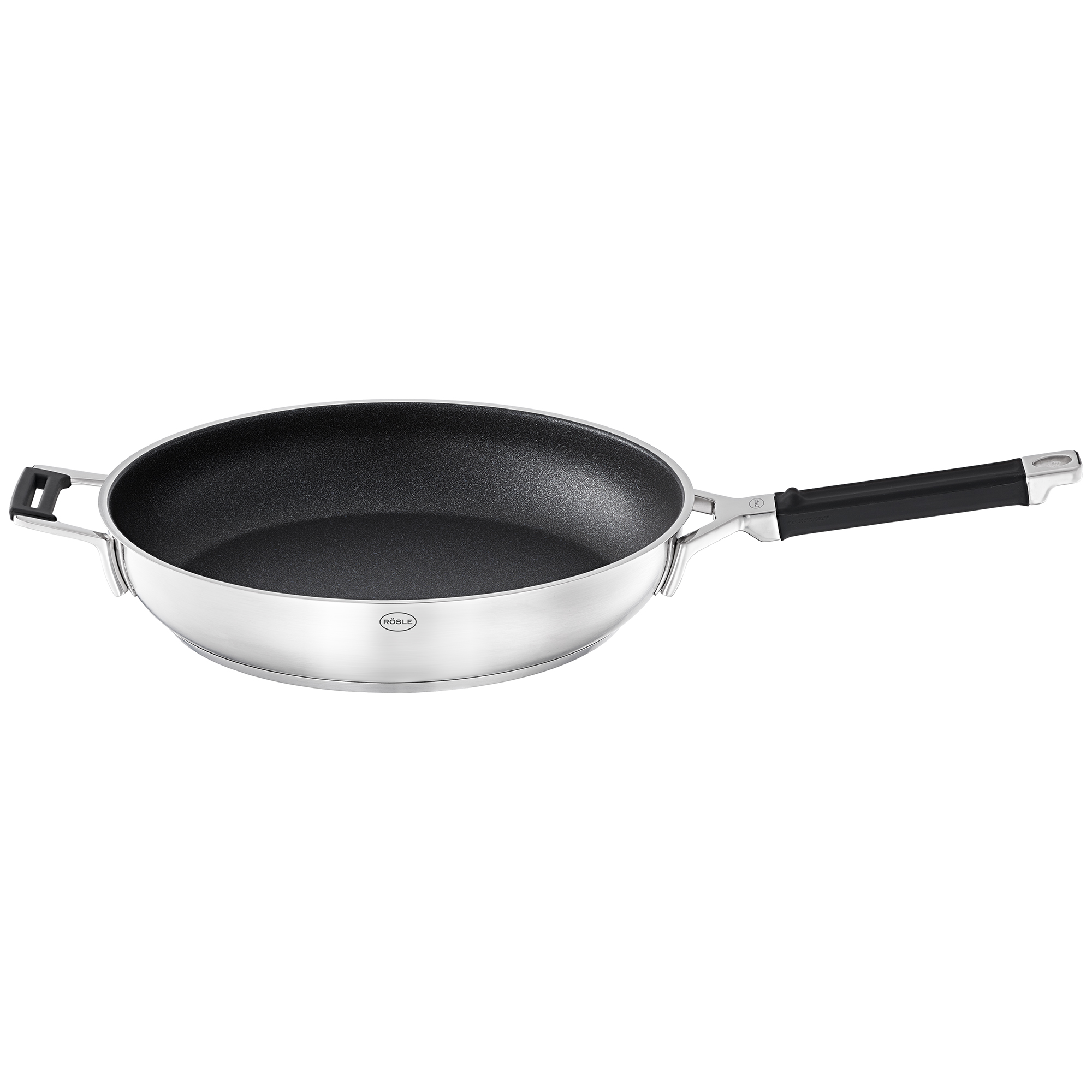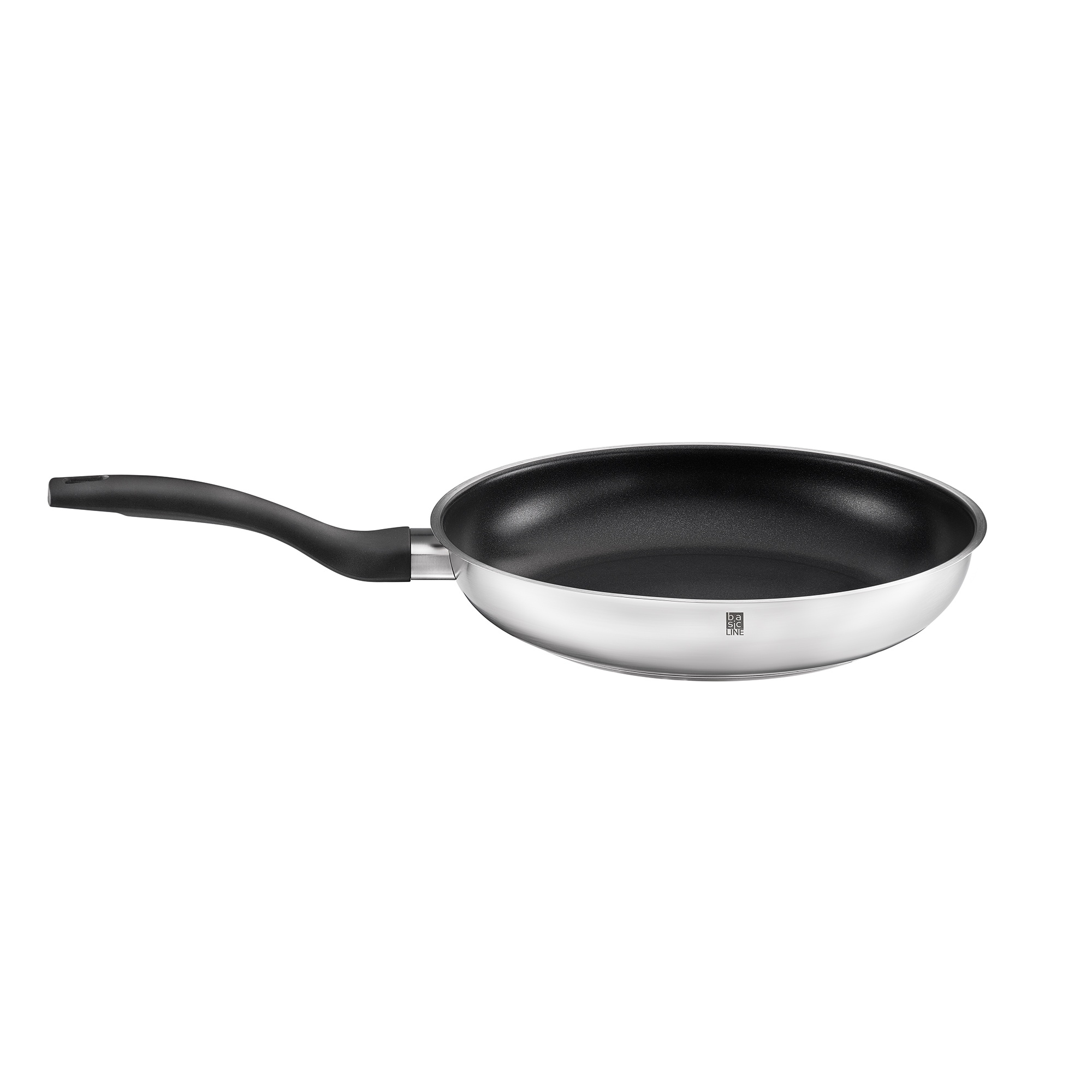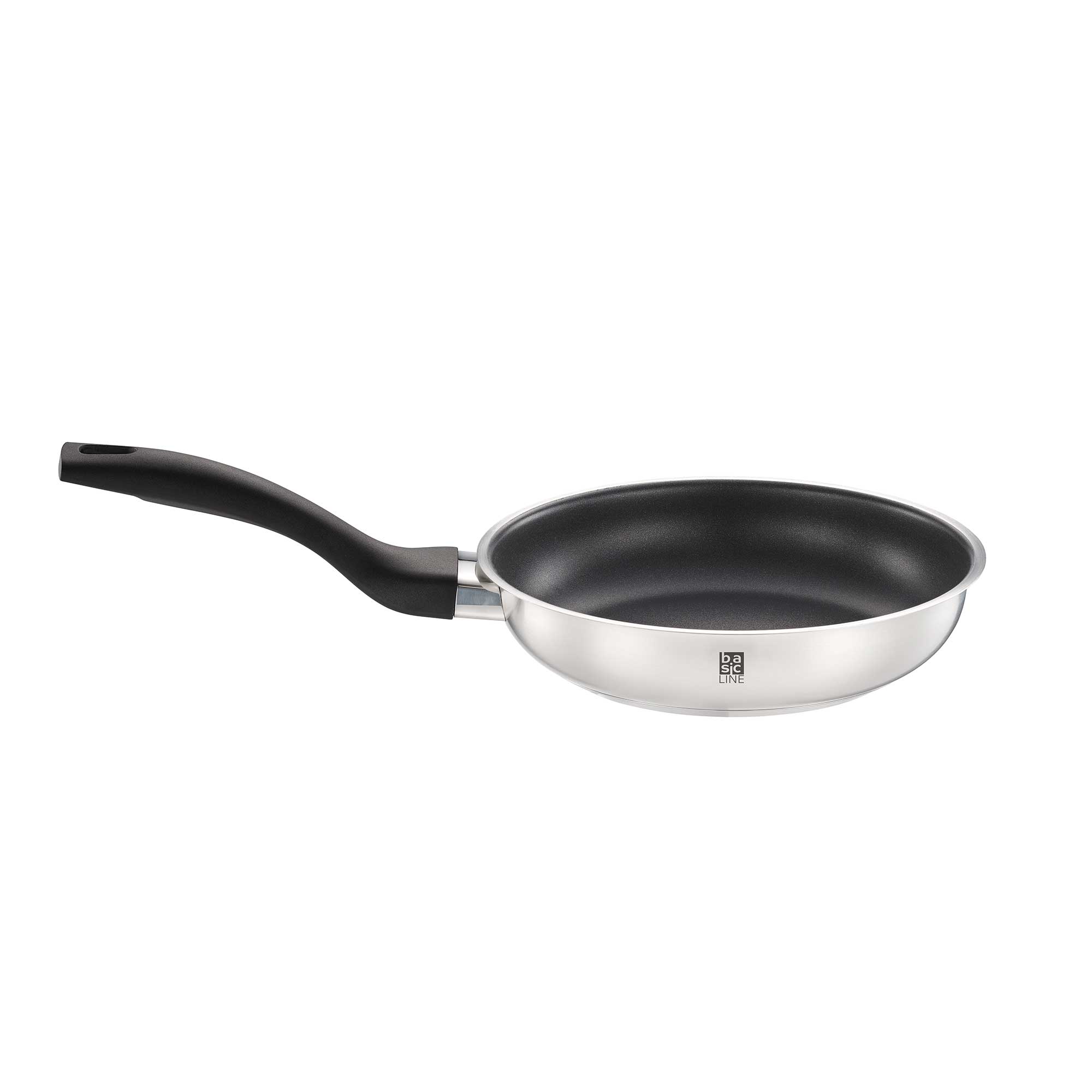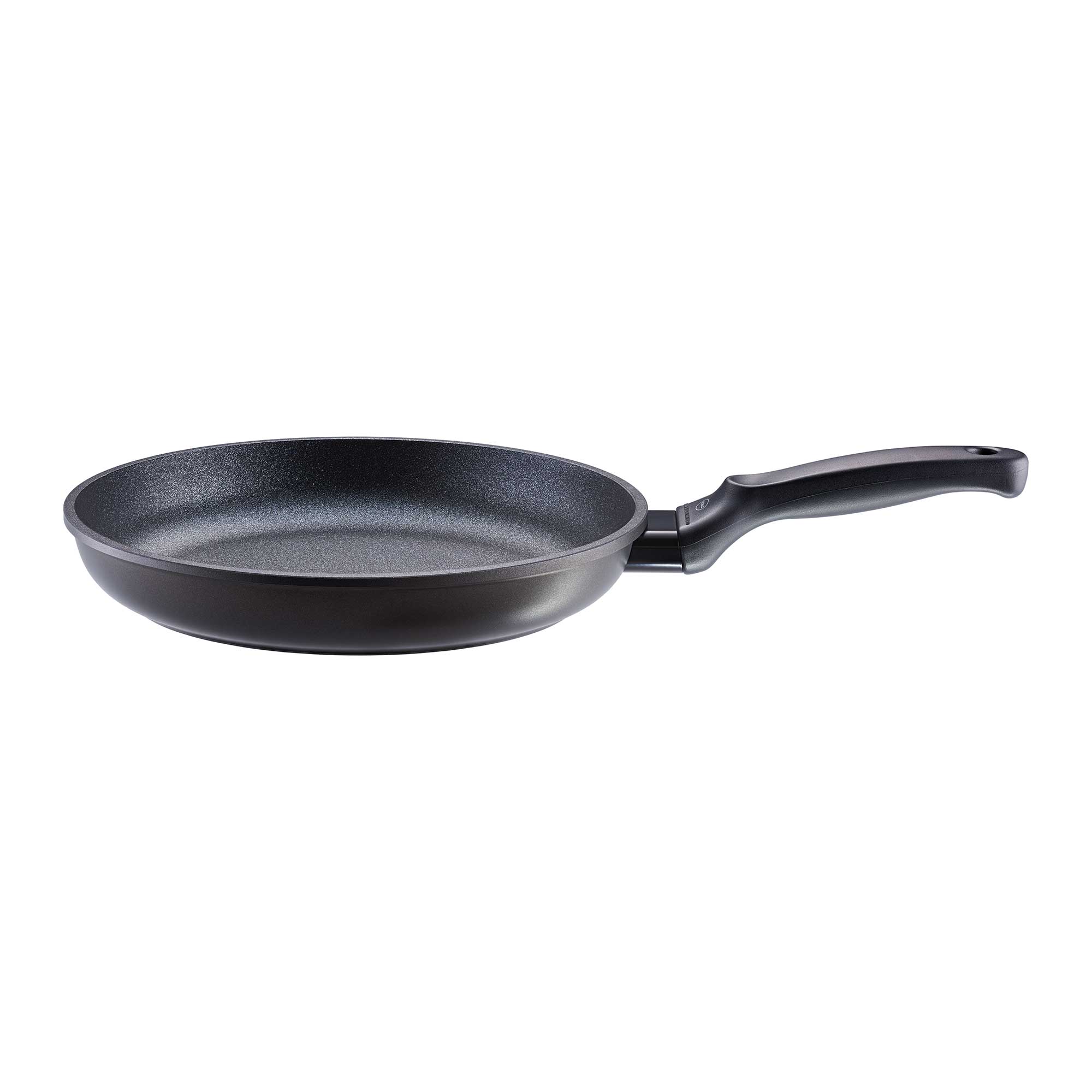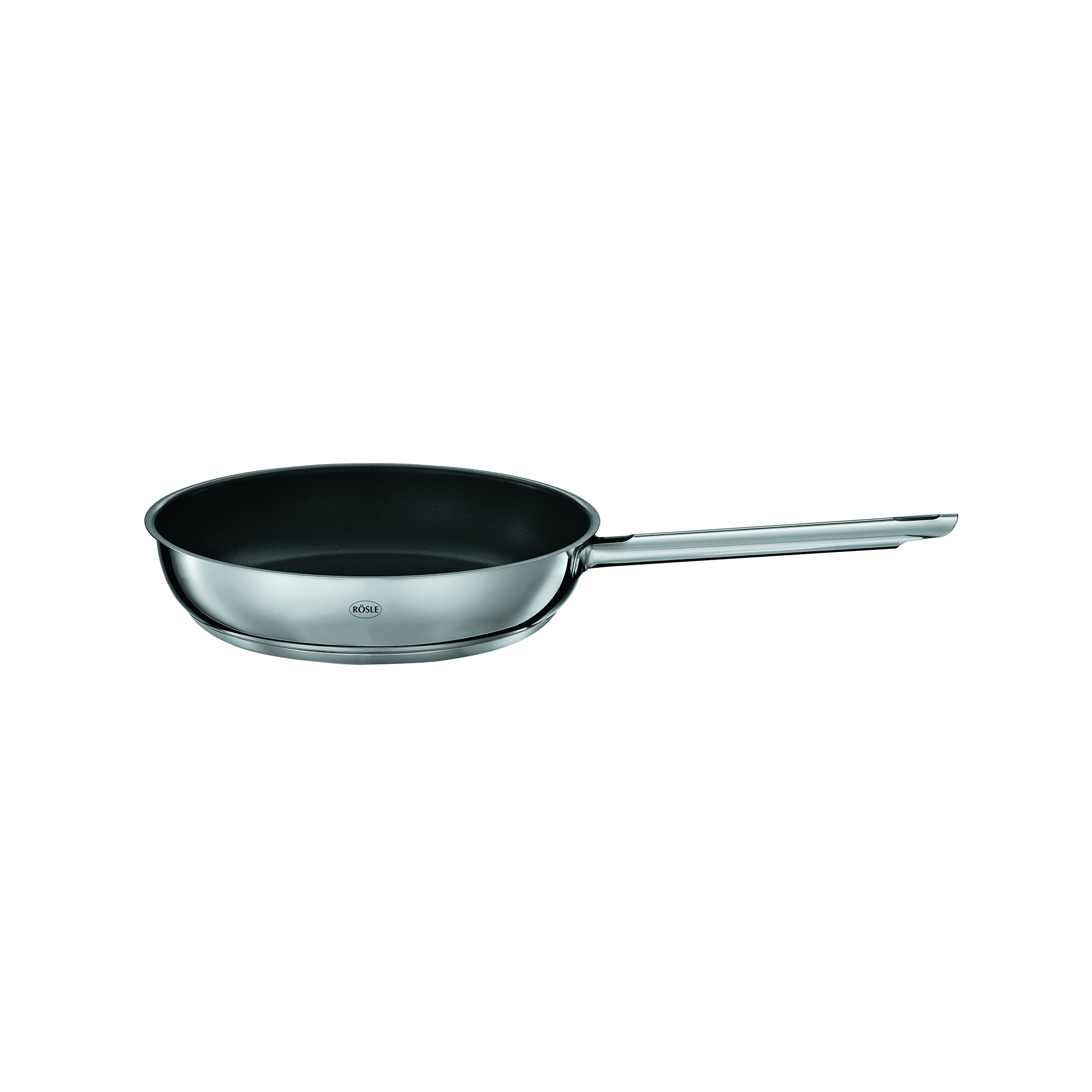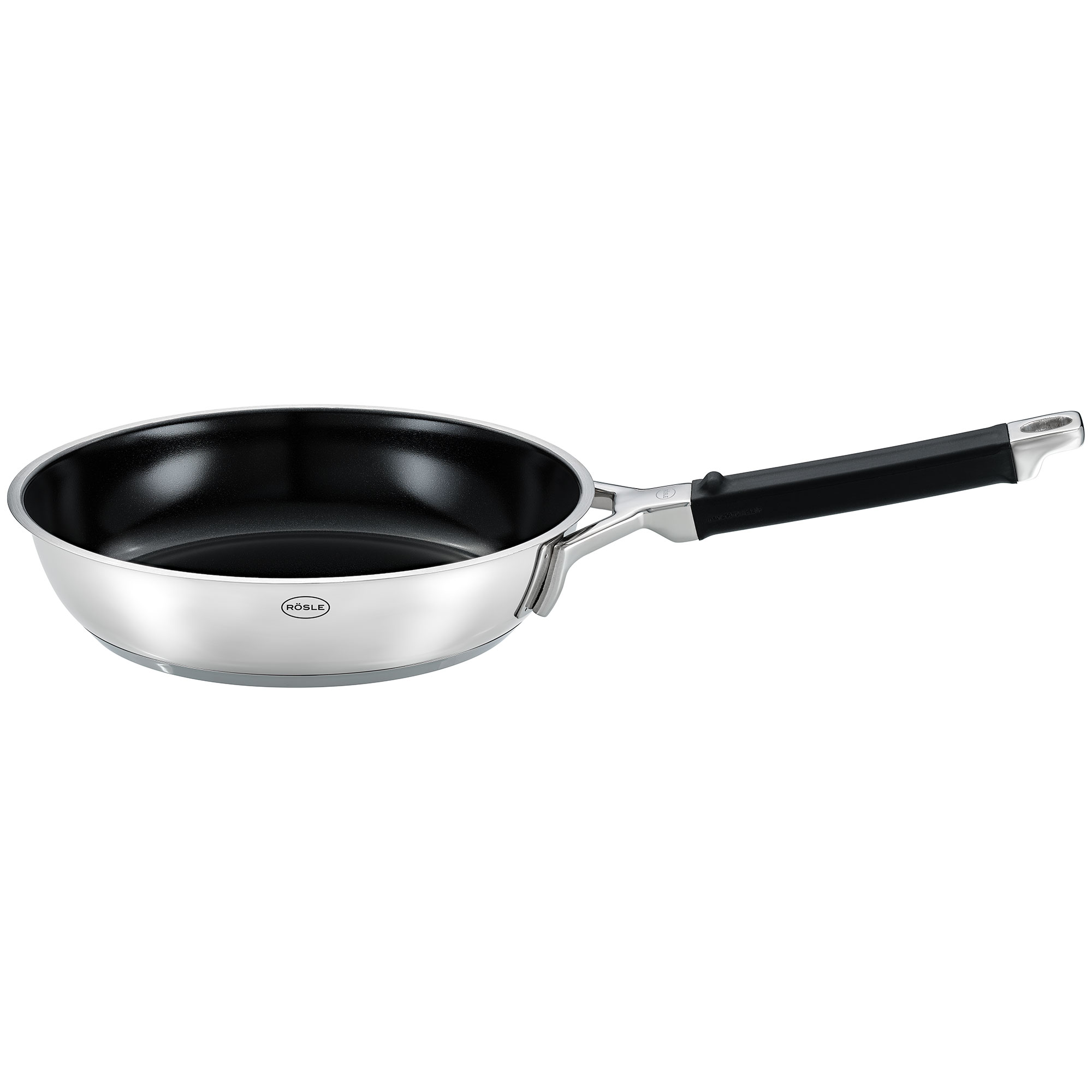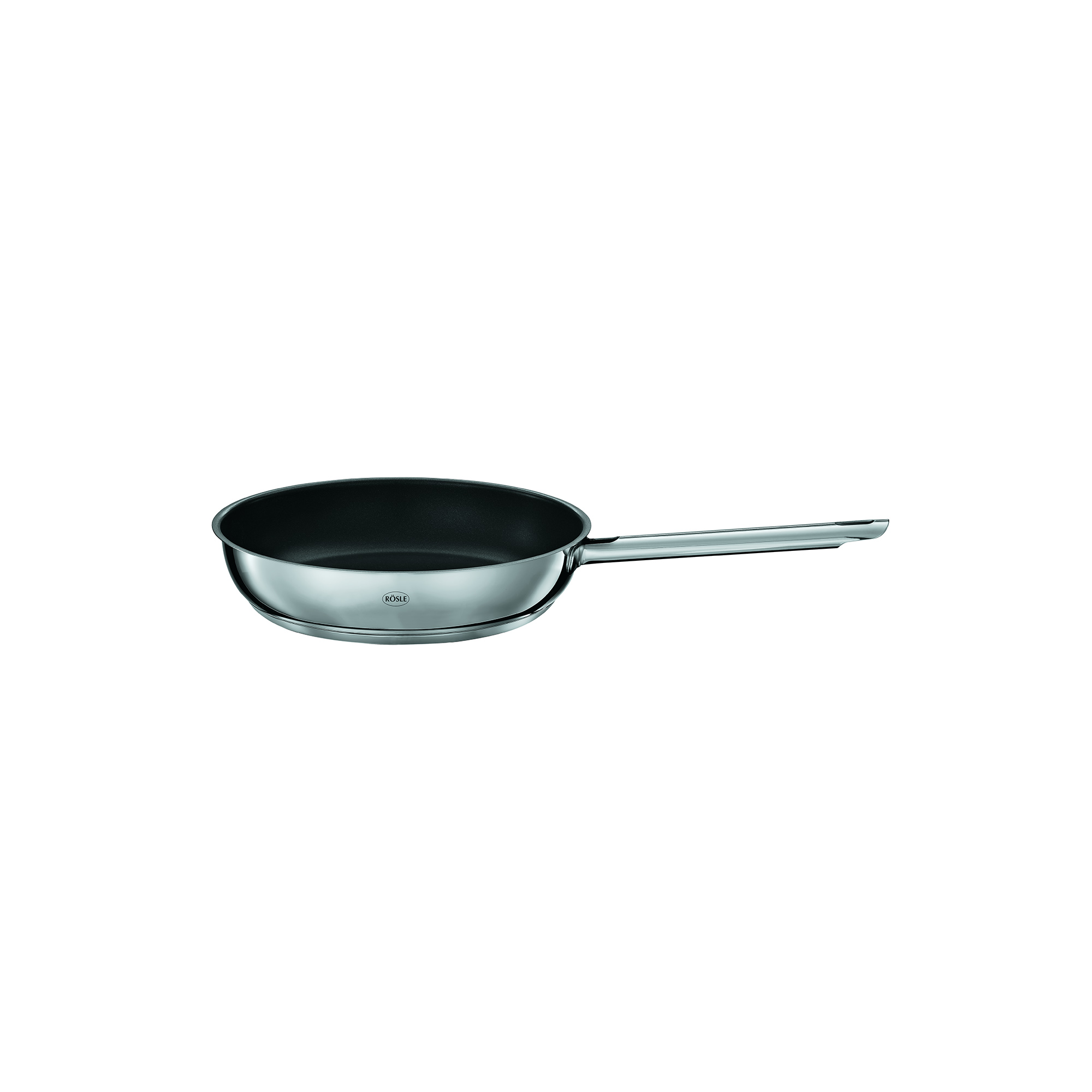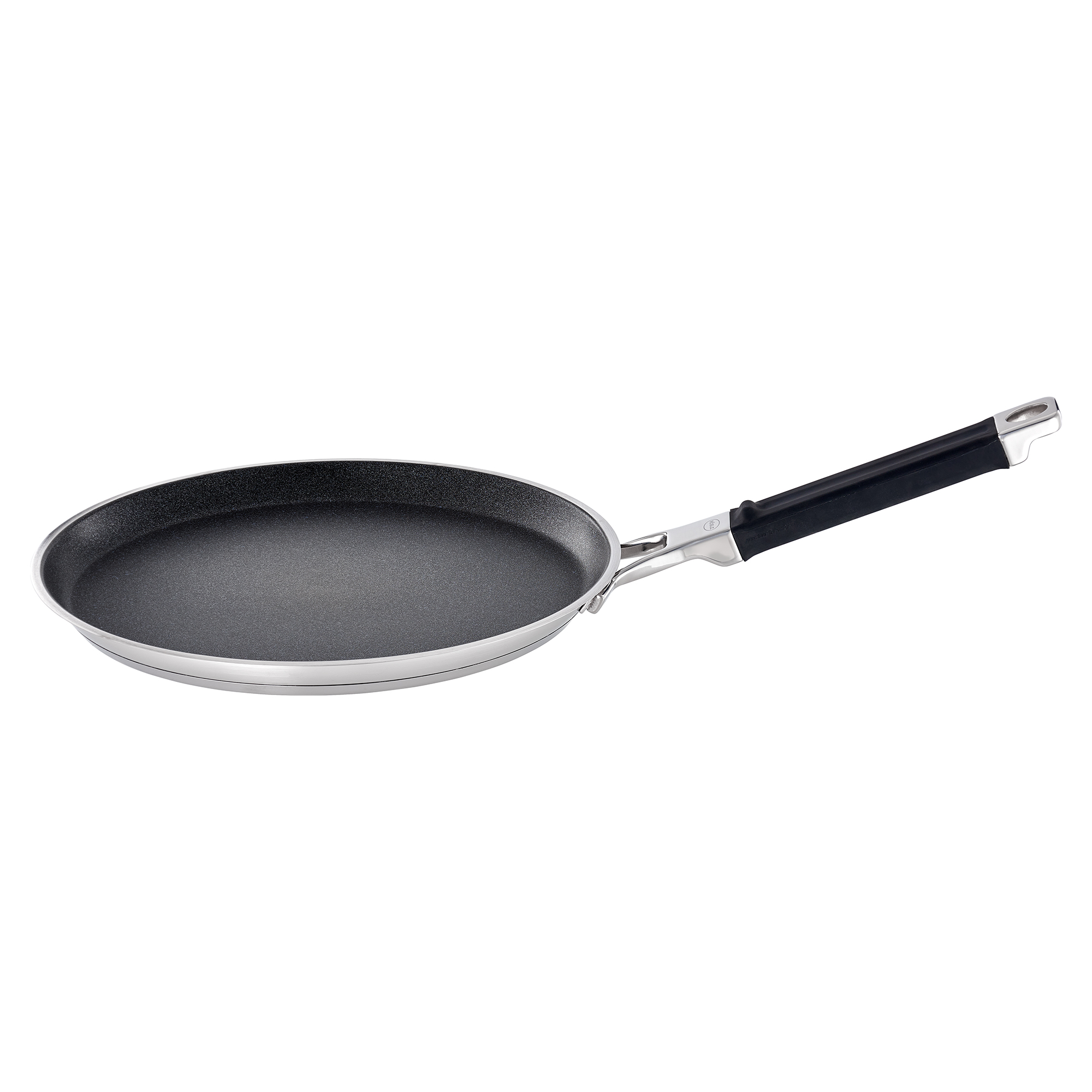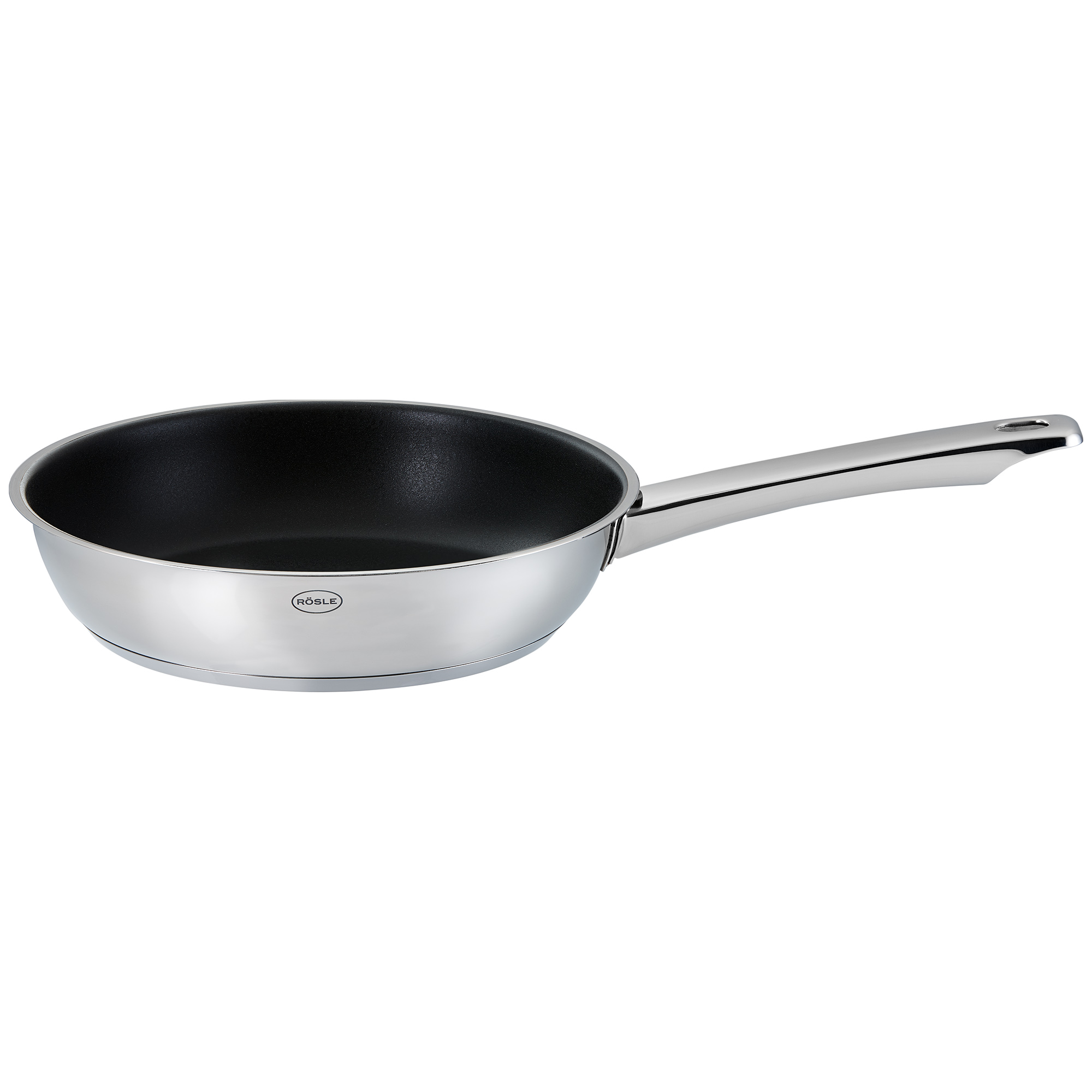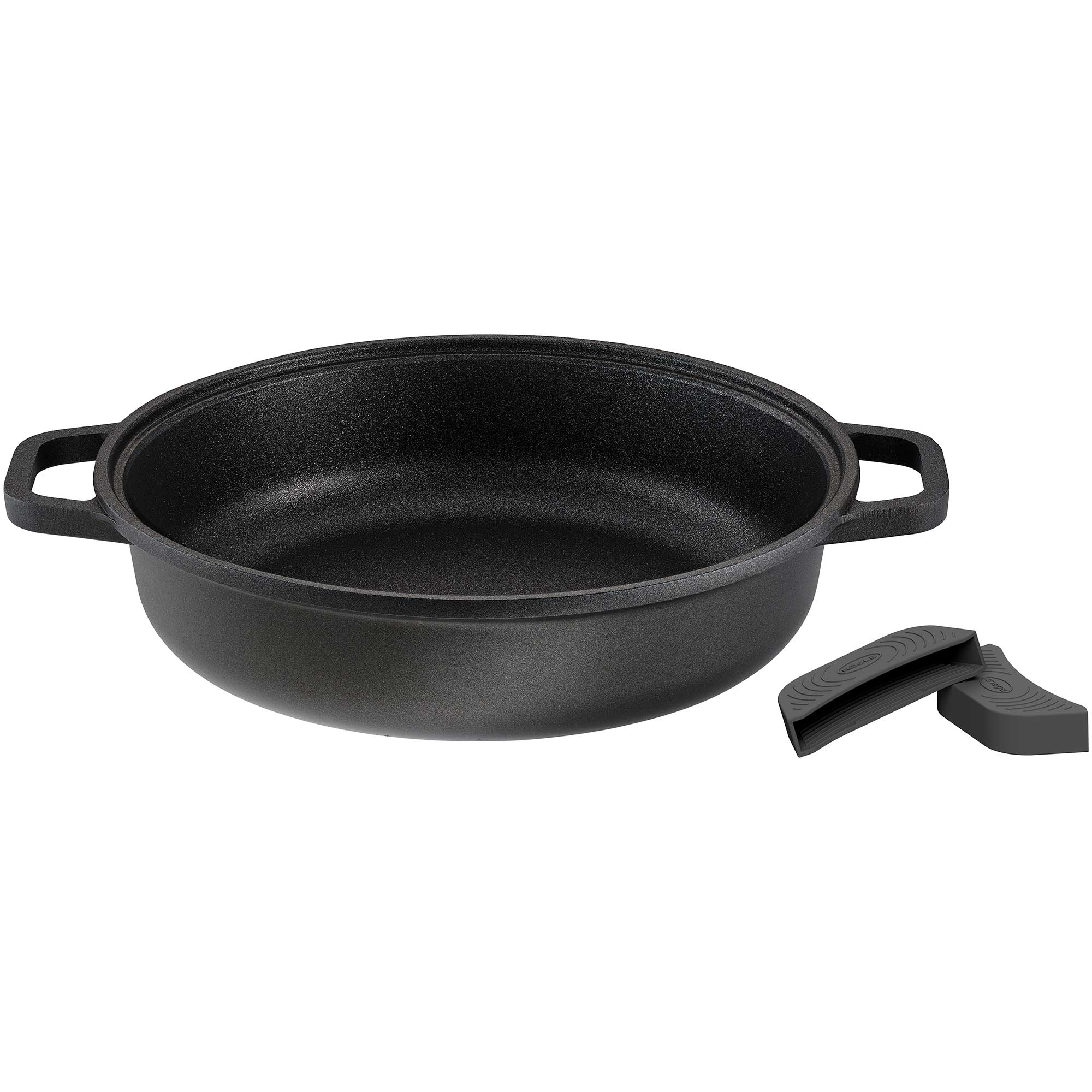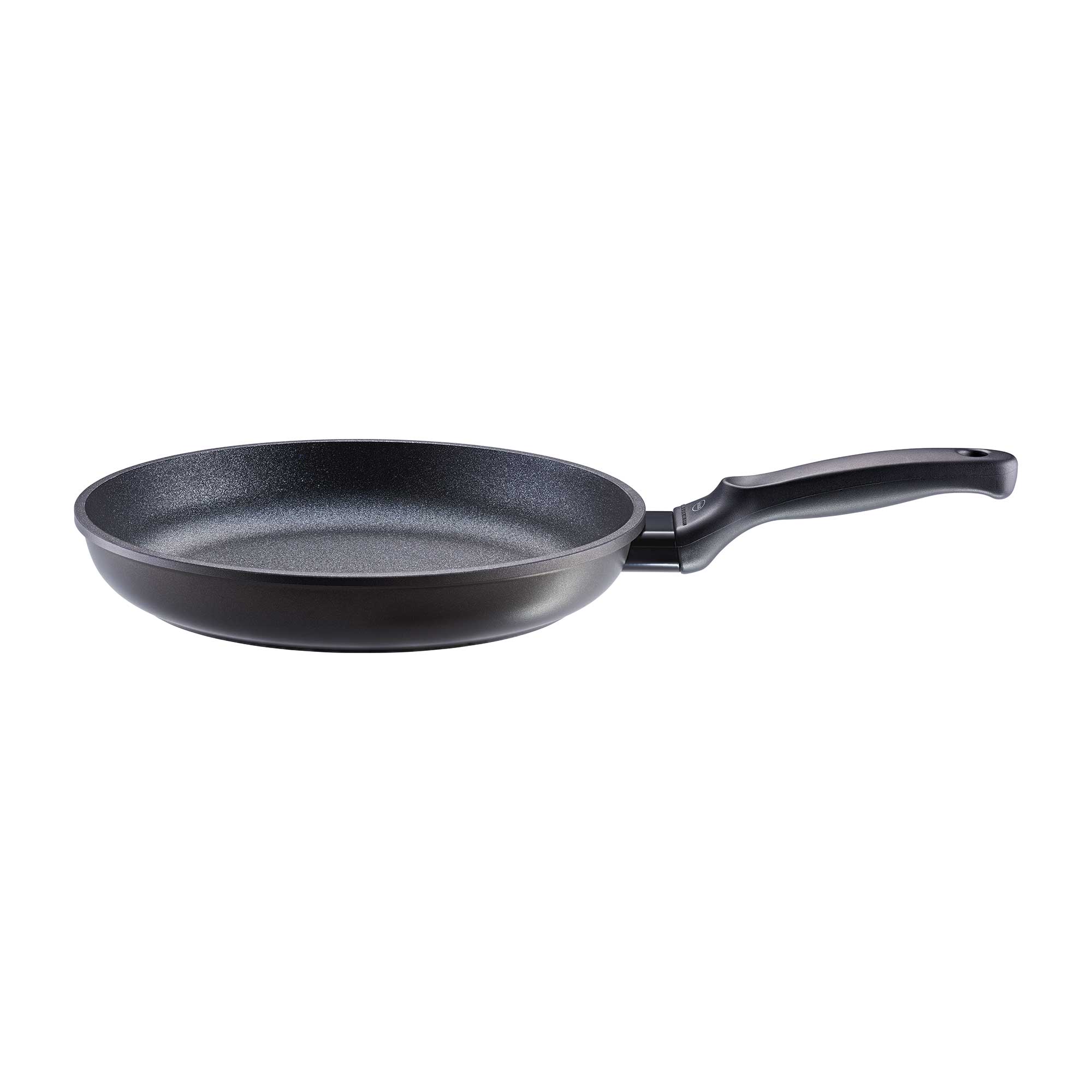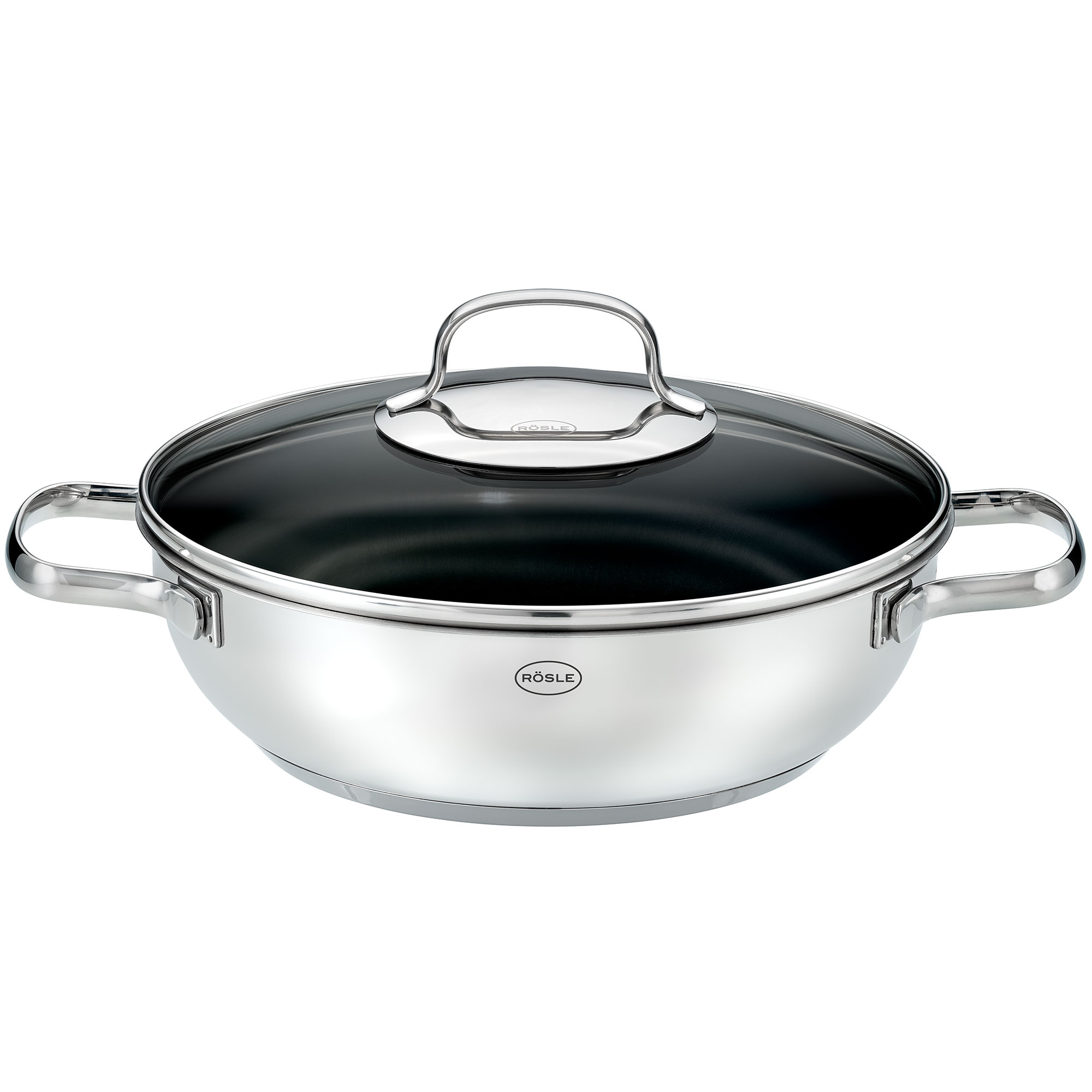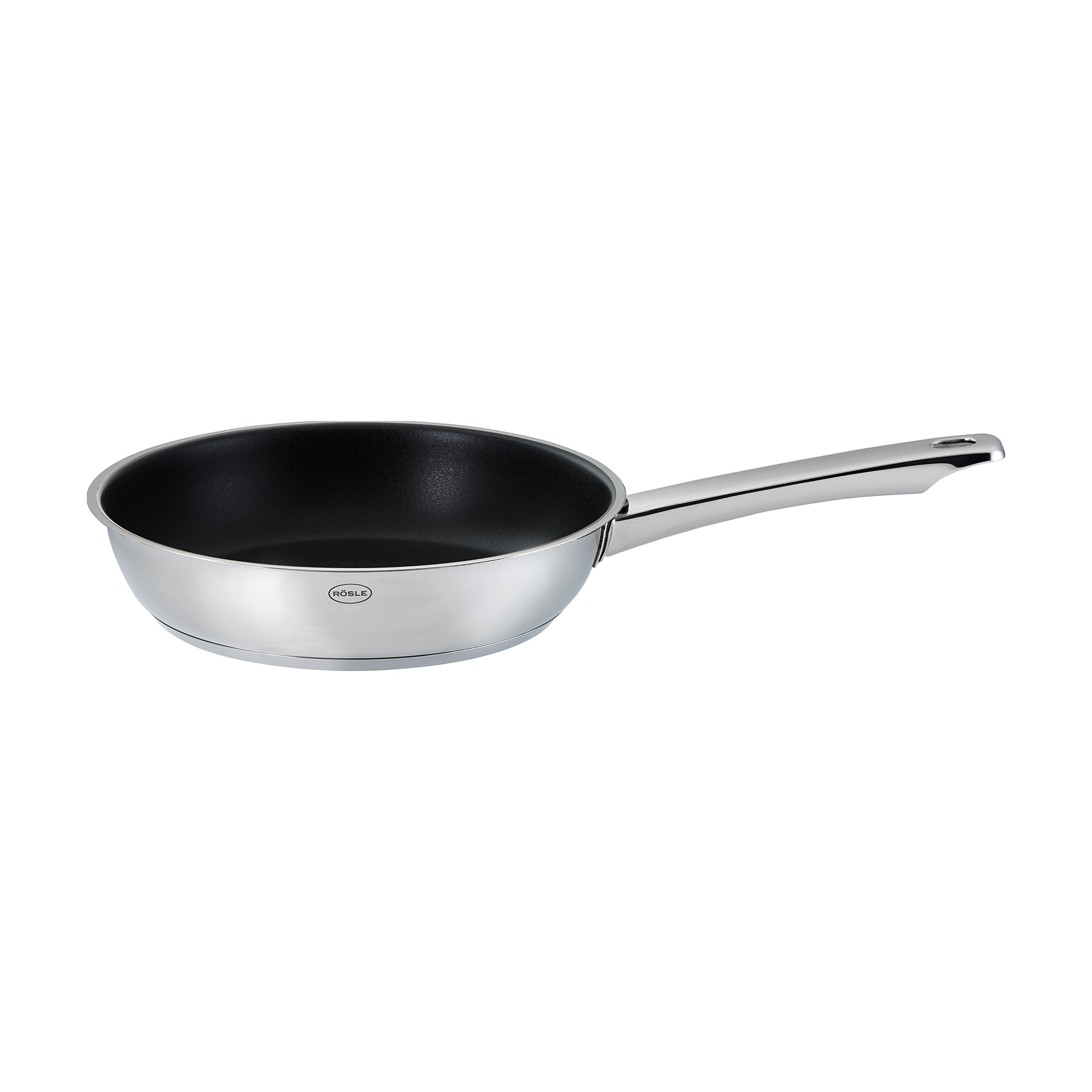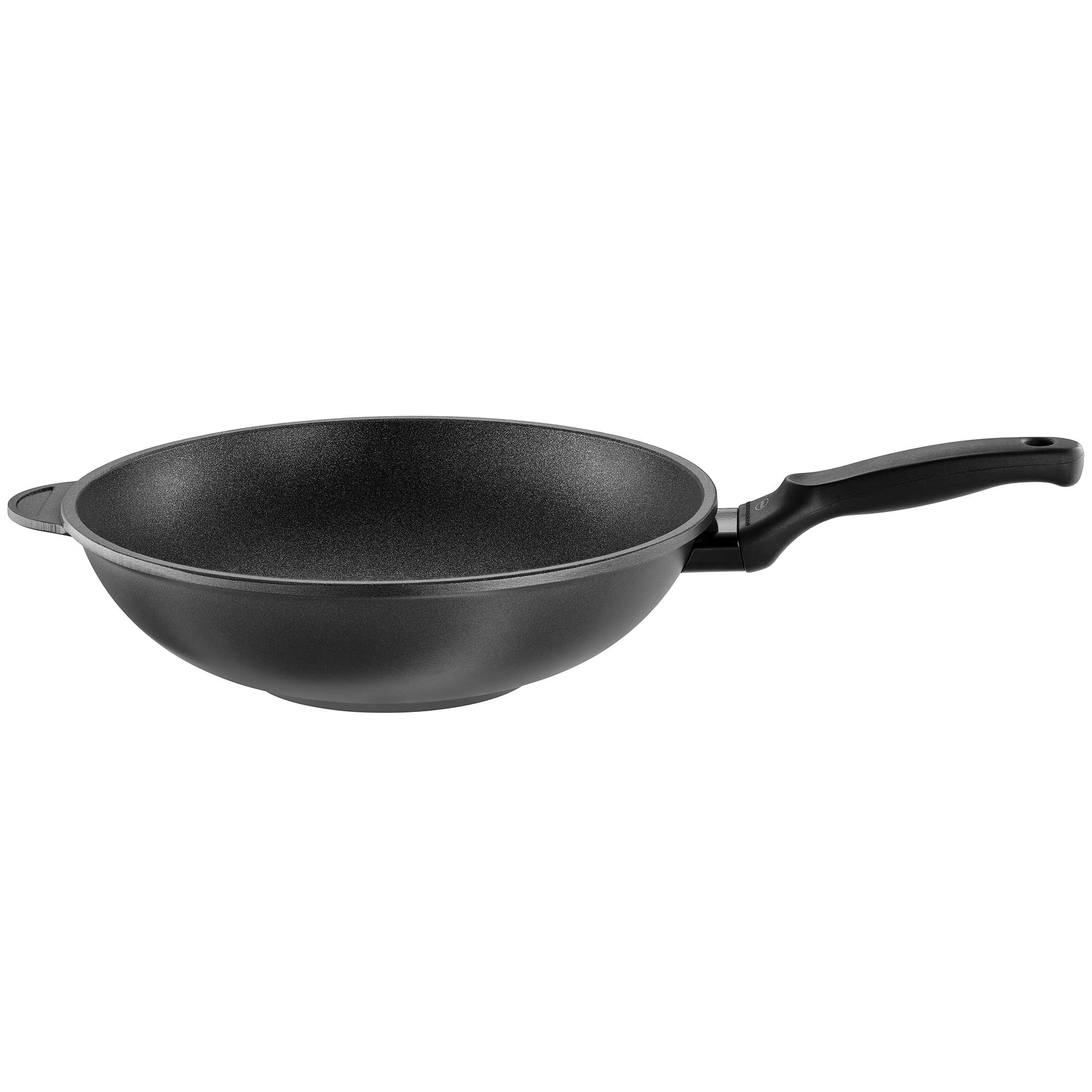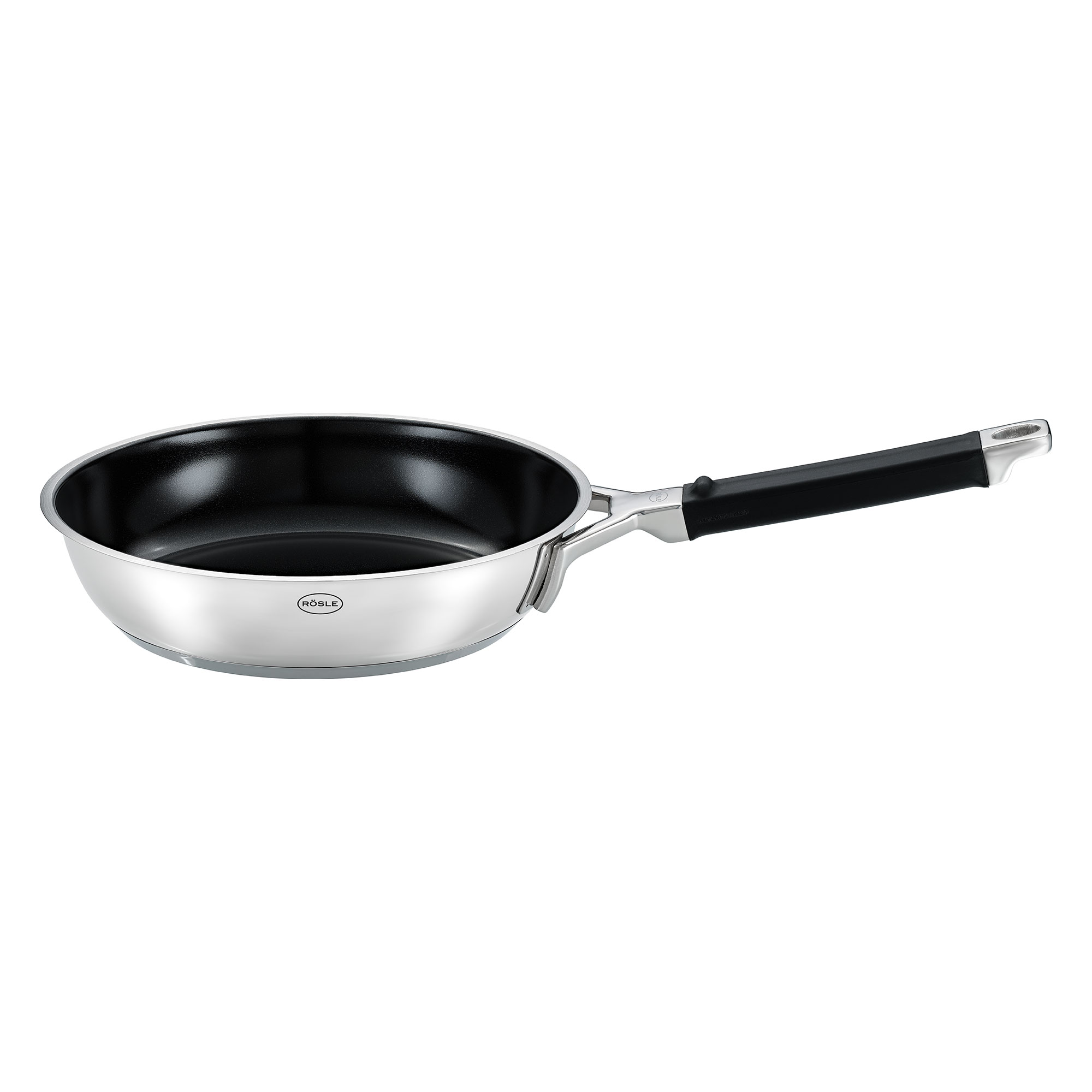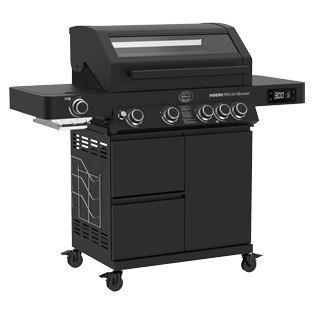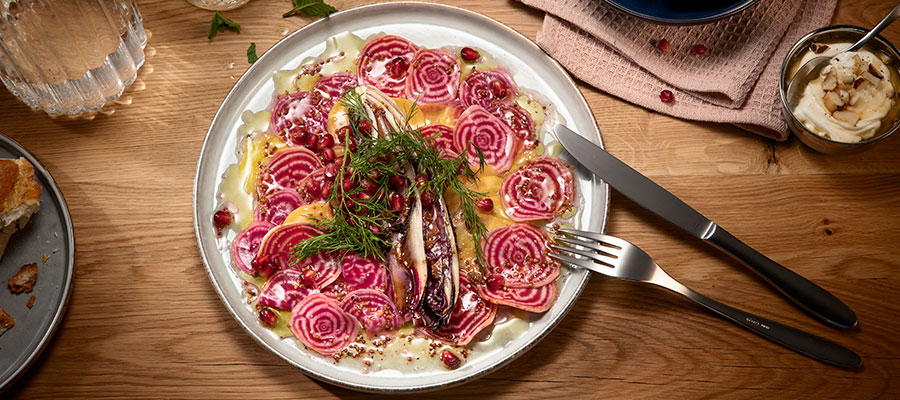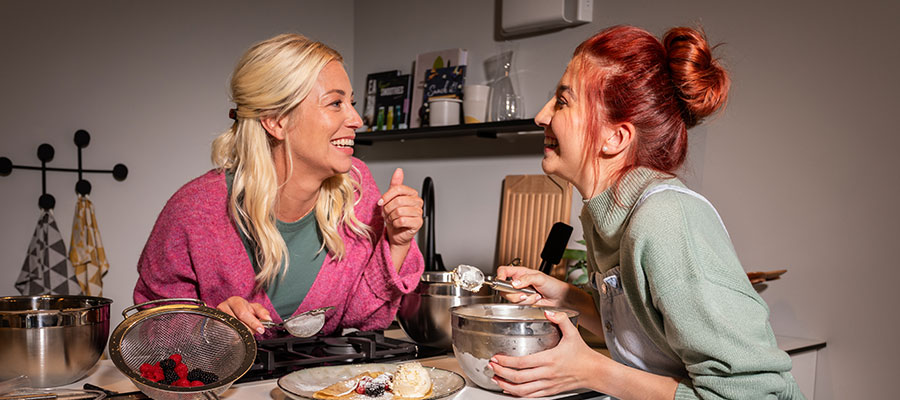Perfect for food and the environment: coated pans with PFOA-free sealing from RÖSLE.
Perfect for food: coated pans from RÖSLE
The roasties are sticking to the bottom of the pan, the breading is dissolving in the fat and the fillet is falling apart? Then it's high time to think about buying a coated pan! But it shouldn't be just any coating that you use to protect your favorite dishes from sticking or burning in the future. This is because non-stick coatings vary greatly in terms of quality and functionality.
In the RÖSLE range, you can choose between stainless steel or aluminum pans with a scratch-resistant non-stick coating or ceramic coating. Read on to find out what other features characterize a high-quality coated pan and what you should look out for before buying to ensure that omelettes or crêpes, fish, meat and fried eggs end up intact and tasty on your plate.
What is a coated pan and which coatings are suitable for modern kitchens?
In a coated pan, the inner base and rim of the pan are coated to prevent food from sticking. The coating also has the advantage that the food can be moved and turned more easily and allows the pan to be used for fat-free or low-fat frying.
Non-stick coatings vary greatly in terms of quality and durability. They are applied in single or multiple layers. High-quality non-stick coatings are extremely durable and scratch-resistant. Multi-layer non-stick coatings, in which metal, mineral or ceramic particles or composite materials such as silicon carbide are incorporated to increase scratch resistance, represent the top class.
Pans with a non-stick coating are generally heat-resistant up to 260 °C. However, it should be noted that not every frying fat is suitable for frying at high temperatures. Therefore, only use refined/natural oils or palm kernel fat/butter fat/coconut oil if you want to sear meat or fish at high temperatures.
Pans with a ceramic coating can withstand temperatures of up to 400 °C, making them ideal for searing. However, you should also ensure that you use a frying fat with a high smoke point. Pans with a ceramic coating from RÖSLE are not only non-stick but also highly scratch-resistant. The smooth surface is ideal for frying, flipping and turning pancakes, fried potatoes and other foods that would otherwise stick easily.
What are the differences between coated pans and what other properties should you look out for?
In addition to function and temperature resistance, appearance can be a deciding factor in which non-stick coating you choose. In contrast to black or black and blue non-stick coatings, ceramic coatings are often designed in a light color. In addition, you should always take other features into account when choosing a coated pan. These include the material from which the pan body is made, the shape and heat resistance of the handles and the size and purpose for which a coated pan is intended.
Coated pans are available in a variety of material combinations, for example as stainless steel pans with non-stick or ceramic coating or as coated pans made of aluminum (cast or forged). Aluminum is an excellent conductor of heat. An equally good effect is achieved with a coated stainless steel pan if it is equipped with an aluminum core in the base or in the multi-layer material of the body.
The standard sizes of pans also differ, with diameters ranging from 20 to 32 cm and different rim heights and filling quantities for private households. Before buying a pan, you should therefore consider how the pan will be used and what minimum size it should be in order to be suitable for everyday use. The medium size of coated frying pans with a diameter of 28 cm is usually chosen for households with a maximum of four people.
Coated frying pans have a handle that makes it easy to lift the pan. Serving pans, on the other hand, have handles so that the pan can be transported safely to the table. A handle and a counter handle are usually found on high-quality frying pans with a diameter of 32 cm.
The material used for the handles should have sufficient heat resistance for the purpose. For example, the heat resistance of the handles of coated pans that you only use for frying or baking on the stove may be lower than that of pans that are also used in the oven. It is also important that the handles and grips fit well in the hand and are shaped in such a way that they are easy to grip even when using oven mitts or kitchen gloves.
How do coated pans from RÖSLE differ in terms of coating and material?
With the exception of our uncoated iron pan 1888 or the uncoated stainless steel pans, all RÖSLE pans have a robust and resistant non-stick coating. In our range you will find pans made of different materials and for different uses with ceramic coatings or the non-stick coatings ProPlex and ProResist.
The high-quality and extremely temperature-resistant ProCera ceramic coating is highly resistant due to its mineral base. The pan body and the ergonomic handles are made of stainless steel; excellent heat conduction on all types of stove is achieved by the encapsulated sandwich base with aluminum core. The ceramic-coated pans from RÖSLE can also be used on induction hobs and in the oven (depending on the type of pan and handle)
The wok pan and the 2-piece pan set from the ELEGANCE series feature the high-quality and extremely temperature-resistant ProCera ceramic coating. The pan set consists of two pans with diameters of 20 and 28 cm.
We use the ProPlex non-stick coating for the scratch-resistant coating of stainless steel pans from the SILENCE PRO, MOMENTS, BASIC LINE and ELEGANCE series as well as the RAISE aluminum pan (forged). ProPlex reliably prevents food from sticking and is temperature-resistant up to 260 °C. In pans with a diameter of 24 or 28 cm, ProPlex is an ideal coating to prevent fish or pastries from sticking. This means that the breading stays on the trout instead of the base of the pan and you can enjoy a pan that is either made entirely of aluminum or has an encapsulated sandwich base with an aluminum core.
In combination with forged aluminum or high-gloss stainless steel, ProPlex is also a visual delight. The non-stick coating ensures that your coated frying pan, serving pan or wok pan will last a long time if treated properly.
The favorites among our coated pans include frying pans, serving pans and crêpe pans with the non-stick coating ProResist from the CADINI, SILENCE and SILENCE PRO ranges. The multi-layer non-stick coating is enriched with silicon carbide particles, which prevents the pan from scratching even if you use stainless steel kitchen utensils.
Silicon carbide, like aluminum, which is partly used for our pan bodies, is an excellent heat conductor. The stainless steel pans coated with ProResist also have an aluminum core in the base; if it is a multi-layer material for which high-quality stainless steel and heat-retaining aluminum have also been optimally combined, this is located in the middle layers.
If you want to fry, stew, braise and bake even more sustainably for the sake of the environment, opt for coated pans from our CADINI range, which are made from 100% recycled aluminum cans.

